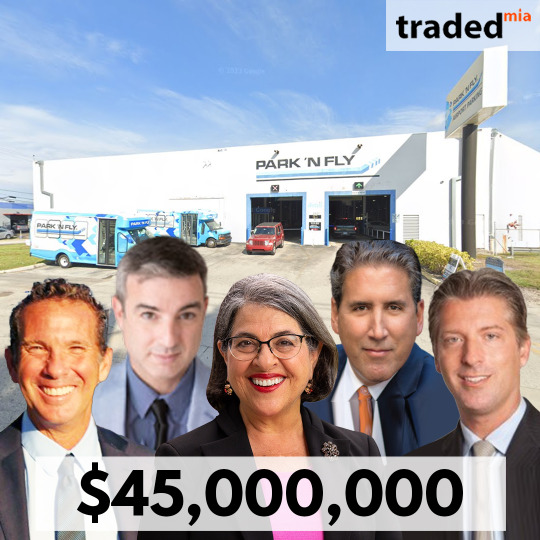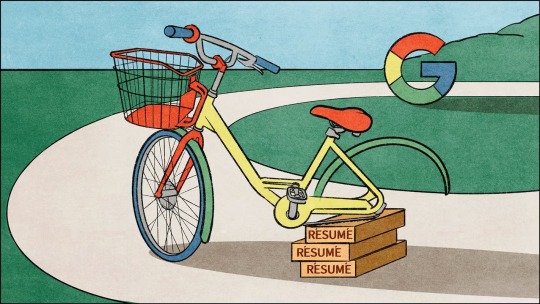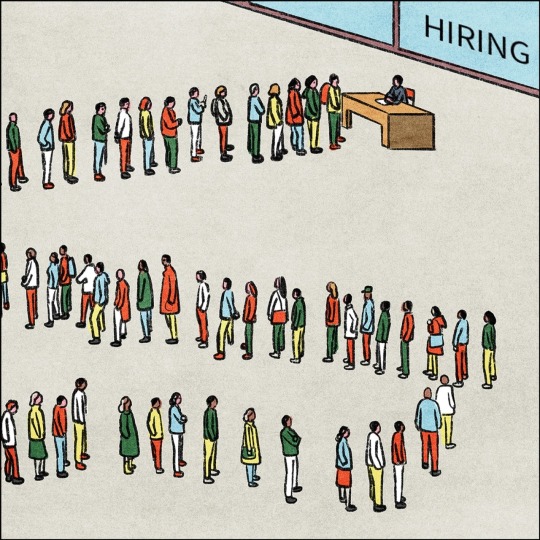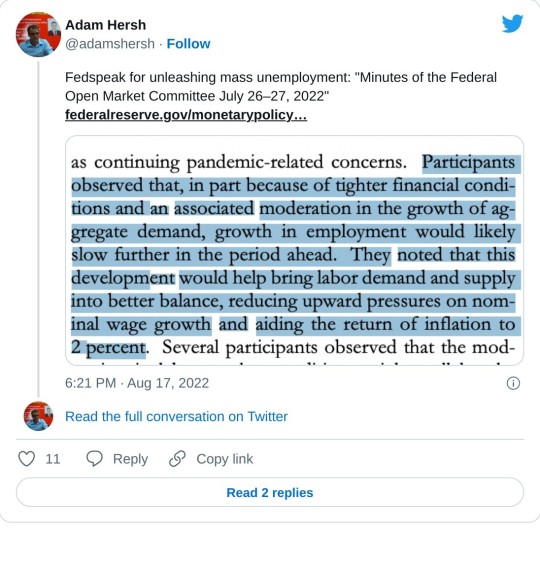#Car Rental Market growth
Text
0 notes
Text
Freedom on Wheels: Exploring the Car Rental Market and its Impact on Modern Mobility
The travel and tourism industry across the globe has been registering significant growth over the past few years. As per the World Travel and Tourism Council, the global travel & tourism industry registered a growth of 3.9% in 2018, as compared to the previous years.
Since the disposable income of people has been increasing in both developed and developing countries, they are becoming more inclined towards spending on leisure activities such as travelling. Transportation is an important part of the travel & tourism industry, which is why several hotels provide scooter and car rental services so that the guests can indulge in sightseeing activities with ease.

Attributed to this, the demand for car rental services is rising swiftly. According to a P&S Intelligence report, the global car rental market is predicted to generate a revenue of $122.6 billion by 2024, rising from $78.7 billion in 2018, advancing at a 7.9% CAGR during the forecast period (2019–2024). Car rental services are offered via luxury, economy, and executive vehicles, among which, the demand for economy vehicles was the highest in the past. This is because of the high fuel efficiency of these cars, which increases their adoption by fleet operators for providing car rental services.
Other than this, the demand for luxury cars is also projected to grow substantially in the years to come, which is owing to the rising utilization of these vehicles for business trips by corporates and significant economic development. Car rental services can be availed online or offline, between which, the adoption of online booking channels has been higher up till now. This can be ascribed to the growing penetration of internet of things and increasing utilization of smart phones. Online platforms provide the user with easy access to services, since they can book the car as per their preference, whenever needed, via the company’s mobile app or website.
To receive free sample pages of this report@ https://www.psmarketresearch.com/market-analysis/car-rental-market/report-sample
Car rental services are being utilized for both personal and business purposes, between which, the demand for these services was higher for personal activities. As the spending power of people is increasing, they are travelling to shorter trips frequently for leisure purposes. For travelling, people prefer to make use of car rental services rather than worry about driving their own cars. Car rental services are utilized for outstation, local, and airport travelling purposes. The requirement for these services was the highest for travelling to airports in the past.
In conclusion, the demand for car rental services is growing due to the swiftly growing travel and tourism industry around the world.
#Car Rental Market#Car Rental Market Size#Car Rental Market Share#Car Rental Market Growth#Car Rental Market Outlook
0 notes
Text
The enormous growth of the global car rental market is mainly attributed to the increasing penetration of the internet & smartphones, the continuously growing disposable income of consumers, and the availability of value-added car rental service. Furthermore, the notable car rental service providers are offering services according to the need of a client with enhanced integrated safety features at a less expensive rate. In addition, these players are following business expansion, strategic collaborations, and technological innovations to acquire the largest share in the global industry. For instance, in March 2019, the Sixt SE, an innovative leader in the car rental business has entered into the partnership with Indian Hotels Company (IHCL) in Berlin. Owing to this deal, IHCL will be able to provide enhanced services to their customers. These key factors may lead to a surge in the demand for car rental services in the global market.
#Car Rental Market Demand#Car Rental Market Revenue#Car Rental Market Growth#Car Rental Market Outlook#Car Rental Market Analysis
0 notes
Text
Vietnam Car Rental Market Share, Size, Latest Trends, Analysis and Report 2024-2032
The latest report by IMARC Group, titled “Vietnam Car Rental Market: Industry Trends, Share, Size, Growth, Opportunity, and Forecast 2024-2032“, offers a comprehensive analysis of the industry, which comprises insights into the Vietnam Car Rental Market Growth. The report also includes competitor and regional analysis, and contemporary advancements in the market.
The Vietnam car rental market is projected to exhibit a growth rate (CAGR) of 12.8% during 2024-2032.

Vietnam Car Rental Market Overview:
Car rental, a service industry that provides temporary access to vehicles for personal or business use, operates on the principle of renting automobiles for short periods, often ranging from a few hours to a few weeks. This service caters to those who require a vehicle temporarily, like tourists, individuals whose own cars are under repair, or during travel outside one's city.
Car rental companies maintain a fleet of vehicles, ensuring a range of choices in size, model, and specifications to suit diverse customer needs. The importance of car rental services lies in their flexibility, providing customers with freedom of movement, especially in areas with limited public transport options.
Request Free Sample Report: https://www.imarcgroup.com/vietnam-car-rental-market/requestsample
Vietnam Car Rental Market Trends:
The market in Vietnam is primarily driven by rising income levels, and the evolving lifestyle preferences contribute to the growing popularity of car rentals for personal use. Additionally, the flourishing market is witnessing a trend towards eco-friendly practices, with an increasing number of car rental companies incorporating electric and hybrid vehicles into their fleets, which is propelling the market growth.
Moreover, the increasing influx of international tourists and the growing domestic tourism sector are propelling the demand for car rental services. Furthermore, the rise in consumer awareness about the costs and responsibilities associated with car ownership, such as maintenance, insurance, and depreciation, is encouraging a shift towards car rental services, which is stimulating market growth.
Explore the Full Report with Charts, Table of Contents, and List of Figures: https://www.imarcgroup.com/vietnam-car-rental-market
Vietnam Car Rental Market Segmentation:
Booking Type Insights:
Online
Offline
Rental Duration Insights:
Short-Term
Long-Term
Application Type Insights:
Tourism
Commuting
Regional Insights:
Northern Vietnam
Central Vietnam
Southern Vietnam
Competitive Landscape:
The competitive landscape of the industry has also been examined along with the profiles of the key players.
Key highlights of the Report:
Market Performance (2018-2023)
Market Outlook (2024-2032)
COVID-19 Impact on the Market
Porter’s Five Forces Analysis
Strategic Recommendations
Historical, Current and Future Market Trends
Market Drivers and Success Factors
SWOT Analysis
Structure of the Market
Value Chain Analysis
Comprehensive Mapping of the Competitive Landscape
Note: If you need specific information that is not currently within the scope of the report, we can provide it to you as a part of the customization.
About Us:
IMARC Group is a leading market research company that offers management strategy and market research worldwide. We partner with clients in all sectors and regions to identify their highest-value opportunities, address their most critical challenges, and transform their businesses.
IMARC’s information products include major market, scientific, economic and technological developments for business leaders in pharmaceutical, industrial, and high technology organizations. Market forecasts and industry analysis for biotechnology, advanced materials, pharmaceuticals, food and beverage, travel and tourism, nanotechnology and novel processing methods are at the top of the company’s expertise.
Contact Us:
IMARC Group
134 N 4th St. Brooklyn, NY 11249, USA
Email: [email protected]
Tel No:(D) +91 120 433 0800
United States: +1-631-791-1145 | United Kingdom: +44-753-713-2163
#marketing#report#news#business news#research#car rental#business growth#research report#information#market research
0 notes
Text
The Global Car Rental market is projected to grow at a CAGR of around 7% during the forecast period, i.e., 2023-28. Various factors, including the diversification of services, increasing urbanization, rising disposable income, ascending preference for on-demand transportation, and growth of tourism, have played a major role in the market growth & would continue to support the market expansion.
#Global Car Rental market#Global Car Rental market News#Global Car Rental market Growth#Global Car Rental market growth
0 notes
Text
Mexico Car Rental Market Is Estimated To Witness High Growth Owing To Increasing Tourism and Favorable Government Regulations

The Mexico Car Rental Market is estimated to be valued at US$ 1,108.1 million in 2022 and is expected to exhibit a CAGR of 10.1% over the forecast period 2023-2030, as highlighted in a new report published by Coherent Market Insights.
A) Market Overview:
The Mexico Car Rental Market offers a range of vehicles for rent to individuals and businesses for various purposes such as personal travel, business travel, and transportation of goods. With the increasing number of tourists visiting Mexico and the rising demand for convenient transportation options, the car rental market in Mexico is experiencing significant growth. The market provides a wide range of rental options ranging from economy cars to luxury vehicles, catering to the diverse needs of customers. Major players in the market offer additional services such as GPS navigation systems, insurance coverage, and roadside assistance to enhance the customer experience.
B) Market Dynamics:
The Mexico Car Rental Market is driven by two major factors: increasing tourism and favorable government regulations.
1. Increasing Tourism:
Mexico is a popular tourist destination, attracting millions of visitors each year. The vibrant culture, beautiful beaches, historical attractions, and natural wonders of Mexico attract tourists from all over the world. As tourists explore the country, they often prefer to rent cars for the convenience and flexibility it offers. This increasing influx of tourists drives the demand for car rentals in Mexico.
2. Favorable Government Regulations:
The Mexican government has implemented several regulations and policies to promote and support the growth of the tourism industry. These regulations include simplifying the process of obtaining a driver's license for tourists, promoting road safety measures, and improving the infrastructure for a better transportation experience. The government's focus on developing the tourism sector and providing a safe and seamless travel experience plays a vital role in driving the car rental market in Mexico.
C) Segment Analysis:
The Mexico Car Rental Market can be segmented based on vehicle type, rental category, and end-user.
1. Vehicle Type:
The market offers various vehicle types such as economy cars, luxury cars, SUVs, and others. Among these, economy cars dominate the market due to their affordability and fuel efficiency, making them a preferred choice for budget-conscious travelers.
2. Rental Category:
The rental category includes airport rentals and off-airport rentals. Airport rentals account for a significant share in the market as most tourists prefer to rent a car at the airport for convenient transportation upon arrival.
3. End-User:
The market caters to both individual and corporate customers. Individual customers form a major consumer base as they rent cars for personal travel and tourism purposes. Corporate customers, including businesses and government agencies, also contribute to the market growth as they require cars for transportation during business trips.
C) PEST Analysis:
The PEST analysis for the Mexico Car Rental Market is as follows:
- Political: The government's focus on promoting the tourism industry and implementing regulations to ensure road safety and infrastructure development are favorable for the car rental market.
- Economic: The growing economy, increasing disposable income, and rising tourism industry contribute to the market growth.
- Social: Changing consumer preferences, rising awareness about sustainable transportation, and the need for convenience and flexibility drive the demand for car rentals.
- Technological: Advancements in technology, such as online booking platforms and mobile applications, make it easier for customers to rent cars, enhancing the market growth.
#Mexico Car Rental Market#Mexico Car Rental Market Key Trends#Mexico Car Rental Market Growth Opportunities#Information and Communication Technology#Coherent Market Insights
0 notes
Text
0 notes
Link
United Kingdom Car Rental Market is poised to grow at CAGR of 13.7 % by 2027. Factors driving United Kingdom Car Rental Market are rise of digital platforms in the marketplace has also facilitated the selection of cars for hire or leasing.
#united kingdom car rental market#united kingdom car rental market size#united kingdom car rental market share#united kingdom car rental industry#united kingdom car rental market trends#united kingdom car rental market growth#united kingdom car rental market report
0 notes
Text
Airport Car Rental Service Market - Business Insights 2022 | Manufacture Players - Enterprise Rent-A-Car, Hertz Global Holdings, Avis Budget Group
Airport Car Rental Service Market – Business Insights 2022 | Manufacture Players – Enterprise Rent-A-Car, Hertz Global Holdings, Avis Budget Group
Final Report will add the analysis of the impact of COVID-19 on this industry.
The Global “Airport Car Rental Service Market” provides a Qualitative and Quantitative Information on Growth Rates, Market Segmentation, Market Size, Future Trends and Regional Prospects. The report presents a contemporary perspective aimed at securing the future potential of the Airport Car Rental Service Market. This…
View On WordPress
#Airport Car Rental Service Market#Airport Car Rental Service Market Covid-19 Analysis#Airport Car Rental Service Market Current and Future Trends#Airport Car Rental Service Market Growth#Airport Car Rental Service Market Size and Shares#Airport Car Rental Service Market Top Key Players
0 notes
Text

Pat Bagley, Salt Lake Tribune
* * * *
LETTERS FROM AN AMERICAN
January 19, 2024
HEATHER COX RICHARDSON
JAN 19, 2024
President Joe Biden today signed the continuing resolution that will keep the government operating into March.
Meanwhile, the stock market roared as two of the three major indexes hit new record highs. The S&P 500, which measures the value of 500 of the largest companies in the country, and the Dow Jones Industrial Average, which does the same for 30 companies considered to be industry leaders, both rose to all-time highs. The third major index, the Nasdaq Composite, which is weighted toward technology stocks, did not hit a record high, although its 1.7% jump was higher than that of the S&P 500 (1.2%) or the Dow (1.1%).
Investors appear to be buoyed by the fact the rate of inflation has come down in the U.S. and by news that consumers are feeling better about the economy. A report out today by Goldman Sachs Economics Research noted that consumer spending is strong and predicted that “job gains, positive real wage growth, will lead to around 3% real disposable income growth” and that “household balance sheets have strengthened.” It also noted that “[t]he US has led the way on disinflation,” and it predicted further drops in 2024. That will likely mean the sort of interest rate cuts the stock market likes.
The economic policies of the Biden-Harris administration have also benefited workers. The unemployment rate has been under 4% for more than two years, and wages have risen higher than inflation in that same period. Production is up as well, to 4.9% in the third quarter of 2023 (the U.S. growth rate under Trump even before the pandemic was 2.5%).
The administration has worked to end some of the most obvious financial inequities in the U.S., such as the unexpected “junk fees” tacked on to airline or concert tickets, or to car or apartment rentals. On Wednesday the Consumer Financial Protection Bureau announced a proposed rule for bank overdraft fees at banks that have more than $10 billion in assets.
While banks now can charge what they wish if a customer’s balance falls below zero, the proposed rule would allow them to charge no more than what it cost them to break even on providing overdraft services or, alternatively, an industry-wide fee that reflects the amount it costs to deal with overdrafts: $3, $6, $7, or $14. The amount will be established after a public hearing period.
Ken Sweet and Cora Lewis of the Associated Press note that while the average overdraft is $26.61, some banks charge as much as $39 per overdraft. The CFPB estimates that in the past 20 years, banks have collected more than $280 billion in overdraft fees. (One bank’s chief executive officer named his boat “Overdraft.”) Over the past two years, pressure has made banks cut back on their fees and they now take in about $8 billion a year from those overdraft fees.
Bankers say regulation is unnecessary and will force them to end the overdraft service, pushing people out of the banking system. Biden said that the rule would save U.S. families $3.5 billion annually.
The administration has also addressed the student loan crisis by reexamining the loan histories of student borrowers. An NPR investigation led by Cory Turner revealed that banks mismanaged loans, denying borrowers the terms under which they had signed on to them. Rather than honoring the government’s promise that so long as a borrower paid what the government thought was reasonable on a loan for 20 or 25 years (undergrad or graduate), the debt would be forgiven, banks urged borrowers to put the loan into “forbearance,” under which payments paused but the debt continued to accrue interest, making the amount balloon.
The Education Department has been reexamining all those old loans to find this sort of mismanagement as well as other problems, like borrowers not getting credit for payments to count toward their 20 years of payments, or borrowers who chose public service not receiving the debt relief they were promised.
Today the administration announced $4.9 billion of student debt cancellation for almost 74,000 borrowers. That brings the total of borrowers whose debt has been canceled to 3.7 million Americans, with an erasure of $136.6 billion. Nearly 30,000 of today’s relieved borrowers had been in repayment for at least 20 years but never got the relief they should have; nearly 44,000 had earned debt forgiveness after 10 years of public service as teachers, nurses, and firefighters.
Biden has been traveling the country recently, touting how the economic policies of the Biden-Harris administration have benefited ordinary Americans. In Emmaus, Pennsylvania, last Friday he visited a bicycle shop, a running shoe store, and a coffee shop to emphasize how small businesses are booming under his administration: in the three years since he took office, there have been 16 million applications to start new businesses, the highest number on record.
Biden was in Raleigh, North Carolina, yesterday to announce another $82 million in support for broadband access, bringing the total of government infrastructure funding in North Carolina during the Biden administration to $3 billion.
On social media, the administration compared its investments in the American people to those of President Franklin Delano Roosevelt’s New Deal in the 1930s, which were enormously popular.
They were popular, that is, until those opposed to business regulation convinced white voters that the government’s protection of civil rights, which came along with its protection of ordinary Americans through regulation of business, provision of a basic social safety net, and promotion of infrastructure, meant redistribution of white tax dollars to undeserving Black people.
The same effort to make sure that ordinary Americans don’t work together to restore basic fairness in the economy and rights in society is visible now in the attempt to attribute a recent Boeing airplane malfunction, in which a door panel blew off mid-flight, to diversity, equity, and inclusion (DEI) efforts. Tesnim Zekeria at Popular Information yesterday chronicled how that accusation spread across the right-wing ecosystem and onto the Fox News Channel, where Fox Business host Sean Duffy warned: “This is a dangerous business when you’re focused on DEI and maybe less focused on engineering and safety.”
As Zekeria explains, “this narrative has no basis in fact.” Neither Boeing nor its supplier, Spirit AeroSystems, is particularly diverse, either at the workforce level, where minorities make up 35% of Boeing employees and 26% of those at Spirit AeroSystems, or on the corporate ladder, where the overwhelming majority of executives are white men. Zekeria notes that right-wing media figures have also erroneously blamed last year’s train derailment in Ohio and the collapse of the Silicon Valley Bank on DEI initiatives.
The real culprit at Boeing, Zekeria suggests, was the weakened regulations on Boeing and Spirit thanks to more than $65 million in lobbying efforts.
Perhaps an even more transparent attempt to keep ordinary Americans from working together is the attacks former Fox News Channel personality Tucker Carlson has launched against Vice President Kamala Harris, calling her “a member of the new master race” who “must be shown maximum respect at all times, no matter what she says or does.” Philip Bump of the Washington Post noted yesterday that this construction suggests that Harris, who identifies as both Black and Indian, represents all nonwhite Americans as a united force opposed to white Americans.
But Harris’s actions actually represent something else altogether. She has crossed the country since June 2022, when the Supreme Court overturned the 1973 Roe v. Wade decision that recognized the constitutional right to abortion, talking about the right of all Americans to bodily autonomy. That the Supreme Court felt able to take away a constitutional right has worried many Americans about what they might do next, and people all over the country have been coming together in opposition to the small minority that appears to have taken over the levers of our democracy.
Driving the wedge of racism into that majority coalition seems to be a desperate attempt to stop ordinary Americans from taking back control of the country.
LETTERS FROM AN AMERICAN
HEATHER COX RICHARDSON
#Letters from An American#Heather Cox Richardson#US Economy#Kamala Harris#reproductive rights#women's rights#income inequality#student loans#stock market
10 notes
·
View notes
Photo

SALE IMAGE: Ronald Simkins, Alan Leon, Mayor Daniella Levine Cava, David Kreps & Michael Simkins DATE: 01/15/2024 ADDRESS: 2800 Northwest 39th Avenue MARKET: Miami ASSET TYPE: Industrial ~ ACRES: 11.5 BUYER: Mayor Daniella Levine Cava - The Miami-Dade County Aviation Department SELLER: Michael & Ronald Simkins BROKERS: Alan Leon (@Noelnala) - Keller Williams (@KellerWilliamsRealty); David Kreps (@DaveKreps) SALE PRICE: $45,000,000 SF: 198,500 ~ PPSF: $227 NOTE: Miami-Dade County Aviation Department has purchased a Park 'N Fly and car rental facility near Miami International Airport for $45 million. The acquisition, made for potential future airport growth, includes leasing part of the property to Budget Rent a Car while retaining Park 'N Fly under a five-year agreement with management fees and revenue sharing. #Miami #RealEstate #tradedmia #MIA #Industrial #AlanLeon #KellerWilliams #DavidKreps #MichaelSimkins #RonaldSimkins #MayorDaniellaLevineCava #TheMiamiDadeCountyAviationDepartment
#Miami#RealEstate#tradedmia#MIA#Industrial#AlanLeon#KellerWilliams#DavidKreps#MichaelSimkins#RonaldSimkins#MayorDaniellaLevineCava#TheMiamiDadeCountyAviationDepartment
3 notes
·
View notes
Text
Catalyzing Success in Dubai: Unveiling Licensing and Regulatory Pathways - PRO Deskk
Embarking on a business venture in Dubai involves navigating through a labyrinth of licensing and regulatory procedures overseen by the Dubai Economic Department (DED). PRO Deskk is a one-stop business solution that can guide you through this meticulous journey. The DED categorizes business activities into Commercial and Industrial Licenses, encompassing trading, services, professions, artisans, craftsmen, and manufacturing.
Different business sectors require approvals from specific ministries and government bodies:
Dubai Municipality: Restaurants and contracting firms need approvals from here.
Road and Transport Authority (RTA): Licenses involving car rentals and specific transportation services require RTA approval.
National Media Council: Businesses in advertising, publishing, and printing seek endorsement from this council.
Central Bank of UAE and Insurance Authority: Financial sector businesses need approval from these entities for banking services, financial institutions, and insurance.
Ministries: Industries like manufacturing, pharmaceuticals, logistics, and maritime activities require ministry approvals.
Dubai Chamber of Commerce and Industry: Every Commercial and Industrial License must register here.
Diving deeper, there are additional requirements and fees tied to certain licenses:
Tourism License: Inbound and outbound tourism activities mandate bank guarantees, refundable upon license cancellation.
Travel Agency License: A deposit at the Department of Tourism & Commerce Marketing is required, refundable later.
Building Contracting Companies: A one-time fee is payable at the Department of Economic Development.
General Trading: Additional charges apply as a one-time fee at the Department of Economic Development.
Customs Broker: A deposit is to be paid to Dubai Customs, refundable upon license cancellation.
RTA Activities: Different fees apply for various RTA activities such as Rent a Car, Bus Rental, and Passenger Transport.
Understanding these nuances is vital for entrepreneurs looking to establish a foothold in Dubai’s dynamic market. PRO Deskk, as a comprehensive business solution provider, can assist in complying with these regulatory requirements, ensuring a smooth start and sustainable growth within the region.
#DubaiBusinessSetup#DubaiEconomy#CommercialLicense#DubaiEntrepreneurship#DubaiRegulations#BusinessCompliance#UAEBusiness
2 notes
·
View notes
Text
Marketing To The Affluent With Mark Satterfield
Sales Growth Tools Mentioned In The Sales Podcast
Hire The Best Speaker for your sales meeting or marketing conference
Take The CRM Quiz: get a free consultation with me
Donate: because you like the show and its no-bullshit approach, and you don't want to buy a book, software, or The Make Every Sale Program.
The Sales Agenda: take control of every sales opportunity like a pro.
Leadferno: Turn lurkers into leads
Founders Card: Get $20,000 in free processing from Stripe, save 15% on Bose, and save on hotels, travel, car rentals, you name it.
Send Drunk Emails: ...that get opened and get you paid!
Phone Burner: work the phone like a machine so you can be a human when you connect.
GUEST INFO:
Guest Site: http://www.AffluentMarketingFreeBook.com
PODCAST INFO:
Support The Sales Podcast: https://bit.ly/3JOJ6jC
Podcast website: https://www.thesaleswhisperer.com/podcast
Apple Podcasts: https://apple.co/3PeYzKL
Spotify: https://spoti.fi/2nEwCF8
YouTube: https://www.youtube.com/@TheSalesWhispererWes
SUPPORT & CONNECT: Check out the sponsors above; it’s the best way to support this podcast
Support on Patreon: https://www.patreon.com/TheWes
Twitter: https://twitter.com/saleswhisperer
Instagram: https://instagram.com/saleswhisperer
LinkedIn: https://www.linkedin.com/in/thesaleswhisperer/
Facebook: https://www.facebook.com/thesaleswhisperer
Medium: https://medium.com/@saleswhisperer
YouTube: https://www.youtube.com/thesaleswhispererwes
Check out The Sales Podcast's latest episode
5 notes
·
View notes
Text
You Studied Computer Science But Big Tech No Longer Wants You. Now What?
Students at the Bay Area’s best universities once dreamed of working for Apple, Google and Meta. Then the lay-offs happened
— 1843 Magazine | May 15th, 2023 | By Charlie McCann

Armed with a stack of cvs still warm from the printer, Ayara (a pseudonym) plunged into the career fair. The room was already packed with job-seekers. The second-year student wasn’t expecting much. In past years, a computer-science student at the University of California, Berkeley, could hope to emerge from this campus ritual with an interesting summer internship, possibly at a “faang” company – the acronym for Facebook (now Meta), Apple, Amazon, Netflix and Google. Ayara’s best friend had snagged an internship at Apple at a fair like this one.
But none of the faang firms was here this time. Neither were Spotify, Salesforce, Uber or Microsoft. In any case most of those companies and almost 50 others – “all the famous ones” – had already rejected her internship applications a few months earlier. And that was before the latest round of job lay-offs. There were 120,000 tech lay-offs in January and February alone; Alphabet, Google’s parent company, accounted for 10% of those lost jobs. (Meta would announce another 10,000 lay-offs shortly after the fair.) By the time the fair came round in March, Ayara had scaled back her ambitions. “Any company that will hire me is good, at this point,” she told me later.
By the time the fair came round, Ayara had drastically reduced her ambitions. “Any company that will hire me is good, at this point”
Ayara muscled her way to a crowded stall towards the back, where Juniper Networks was holding court. Founded in 1996 – long before most college students were born – Juniper is a workhorse of Silicon Valley: it makes a decent share of the hardware underpinning the internet, and software that controls that hardware. It has none of the “sparkle” (one of Ayara’s favourite words) of a faang company – its talent-acquisition manager told me that students often haven’t heard of it. Yet at this fair it had one irresistible selling point: it was still hiring interns.
Ayara caught the eye of a Juniper recruiter and they started talking. The fair was a bit like a cocktail party – the polite smiles, the hard sell – except without alcohol to quell people’s nerves. Some students were tapping their thighs or pinching the skin on their hands. Ayara put on a good show of appearing relaxed. As the recruiter scanned her résumé, she peppily described some of the highlights: interning at a subsidiary of Zipcar, a car-rental company; introducing emoji reactions within a messaging feature at PlayStation.

“Looks like you’ve worked for some big companies,” the recruiter said approvingly. “So why are you interested in Juniper? Do you know something about our company or just exploring?”
“I’m looking for a summer internship,” she said, gently dodging the question.
The recruiter, who wore a Berkeley alum badge on his t-shirt, nodded politely. He explained that a primary focus of the company is network security. “Are you interested in security?”
“Yeah,” she said tentatively, in the voice of somebody who had never considered pursuing a career as unglamorous – as unsparkly! – as security. After the fair, she submitted an application to Juniper. Weeks later, she had yet to receive a response.
It is not the ideal moment to enter the tech job market. For years the tech industry has paired huge profits with massive investments in expansion. Intoxicated by its own success during the pandemic, big tech binged on new recruits: Meta doubled its headcount over a short span. Now the good times are over. The tech giants have encountered stiffer competition (like TikTok) and tougher economic conditions, including manufacturing shortages and high interest rates. Pushed by investors to embrace unfamiliar concepts like “fiscal responsibility” and “long-term growth”, the industry has, over the past year and a half, shed some 300,000 workers, the most since the dot-com crash two decades ago. Amazon and Meta have rescinded job offers.
The effects are being felt in campuses all over the country. At Berkeley, would-be interns had formed a queue outside the career fair before its doors even opened. A few especially keen students wore suits and ties (a rare sight on campus where hoodies are de rigueur).

Even if they succeed in snagging an internship, their position is precarious. Some computer-science majors have had their internships cancelled; those with job offers have had their start dates pushed back, according to Sue Harbour, the executive director of the college career centre. They are the lucky ones. Several students told me that they had applied for jobs and internships at hundreds of companies with no offers to show for their efforts. When I introduced myself to a sophomore, who was majoring in electrical engineering and computer science, he asked, “Is The Economist hiring?” He was joking. Sort of.
More than 60 companies had set up stalls at the fair, ranging from government agencies and financial institutions to niche tech startups and, surprisingly, a spa. The biggest tech name there was sap, a European software giant. The absence of the most famous names in tech probably gave a boost to the less flashy suitors at the ball. “We get passed by a lot at this table,” a recruiter from a local public-transport agency told me; she managed to draw a smattering of enquirers. Firms that had suddenly become rock stars included Bank of America, and a startup making self-driving trucks. Students often haven’t heard of Juniper, said Benjamin Chen, a talent-acquisition manager whom I found setting up his stall, because “we work behind the scenes”. He’s often greeted by students who gamely open with, “Oh tell me about Jupiter,” Chen said, laughing.
Big tech binged on new recruits: Meta doubled their headcount over a short span. Now the good times are over
These companies have an appeal beyond simply being all that’s on offer. The quality that student job-seekers prize most in a company now is stability, according to a recent survey conducted by Handshake, a recruitment startup. Chen says he too has noticed a shift “towards a company that’s more stable and more predictable rather than something a little bit more, I guess, risky.”
This is a big adjustment in the culture of computer-science students at Berkeley. The large firms used to be imbued with an almost magical allure: no other companies were seen as worth working for. “The name is important because with the name comes recognition of your skills or your work,” Ayara told me. People say, “Oh, this person worked there.”

Some of this yearning comes from a sense of competitiveness and one-upmanship, driven by social media. Berkeley students had already gone through what one described as a “very stab-in-the-back” selection process to get on the computer-science course. Students who have secured jobs and internships crow about their success on LinkedIn, said Ayara.
The high salaries and gourmet food of the big tech firms were also part of the appeal. So are the sprawling campuses, which resemble “a playground”, said Vicky Li, a 21-year-old Berkeley graduate. Several students told me that big tech internships are far from demanding. Li has heard that interns at Google, for example, “get paid a ton” even though they work just two hours a day. (I asked Google about this and was told, “We do not accommodate part-time internships.”)
But students are now starting to wonder if they were seeing these big tech firms straight.
Li thinks she “romanticised” faang companies. She has started to see the perks they offered as gimmicks. Now she describes herself as “a little bit more anti-corporation”. She had realised she didn’t want to work in big tech before the lay-offs and is relieved she didn’t get sucked into it. She hopes to work as a product designer at a small company, ideally a startup, where she can get “solid experience rather than just chasing a bigger name”.
At the Juniper stall I met Arthur Kang, a Berkeley senior who had spurned offers from famous companies in favour of a job with a less glamorous firm this summer. Juniper offered him the opportunity to create something new rather than being a cog in the machine, he explained. His friends are puzzled by his decision, but he’s confident it was the right call. “Stability”, he told me, “includes not being fired right away.” ■
— Charlie McCann is a Features Writer for 1843 Magazine | Illustrations Klaus Kremmerz
2 notes
·
View notes
Text
Yves here. We’ve been warning for some time that the inflation we are suffering now is due to Covid-induced supply chain breakages, Russia sanctions blowback leading to high energy and commodity prices, and droughts and high heat wrecking crop yields. Labor does not have bargaining power, witness among other things falling real wages and continued record corporate profit share of GDP. But the Fed thinks its job is to break glass and kill demand, as in jobs.
By Jake Johnson. Originally published at Common Dreams
The newly released minutes of the Federal Reserve’s July meeting indicate that U.S. central bank officials have no plans to deviate from aggressive interest rate hikes as they attempt to tamp down high inflation, a policy response that one economist characterized as a commitment to “unleashing mass unemployment.”
“We have a supply-side problem, but rather than trying to restore or raise supply-side capacity the Fed is aiming to push demand down to the level where supply is currently constrained by pandemic, war, and climate crises,” noted Adam Hersh, a senior economist at the Economic Policy Institute.
Published Wednesday, the minutes of the Fed’s July 26-27 policy meeting show that the nation’s central bankers believed at the time that “there was little evidence to date that inflation pressures were subsiding,” reporting that “their business contacts remained concerned about persistently high inflation.”
Fed officials expressed their view on inflationary trends prior to the latest Consumer Price Index (CPI) reading, which suggested that price surges—a problem hardly limited to the U.S.—have cooled slightly while remaining near a four-decade high of 8.5% year over year.
“They judged that inflation would respond to monetary policy tightening and the associated moderation in economic activity with a delay and would likely stay uncomfortably high for some time,” the minutes read. “Participants also observed that in some product categories, the rate of price increase could well pick up further in the short run, with sizable additional increases in residential rental expenses being especially likely.”
While conceding that “supply bottlenecks were continuing to contribute to price pressures,” Fed officials signaled they will stay the course with rate increases aimed at suppressing economic demand, an approach they acknowledged would likely cause higher unemployment. The Fed’s next policy meeting is in September, when another large rate hike is expected even amid evidence of moderating prices as well as slowing economic and wage growth.
“Participants observed that, in part because of tighter financial conditions and an associated moderation in the growth of aggregate demand, growth in employment would likely slow further in the period ahead,” according to the minutes. “They noted that this development would help bring labor demand and supply into better balance, reducing upward pressures on nominal wage growth and aiding the return of inflation to 2%.”
“Participants remarked that a moderation in labor market conditions would likely involve a decline in the number of job openings as well as a moderate increase in unemployment from the current very low rate,” the minutes continue, noting that officials admitted the risk of hiking interest rates “by more than necessary to restore price stability.”

To progressive economists and other analysts, the Fed is flirting with disaster.
In an op-ed for The Guardian on Wednesday, Isabella Weber of the University of Massachusetts Amherst and Mark Paul of Rutgers University observed that “the current inflation situation hasn’t been about all goods in the economy getting more expensive at the same rate.”
“Specific goods—food, fuel, cars, and housing—have been experiencing massive price shocks, raising the general inflation level substantially,” they wrote. “Controlling these changes would require aggregate demand to shrink to unbearable levels for average Americans—essentially making people too poor to buy goods, and thus alleviating bottlenecks. Rate hikes are not only ill-suited to bring down these essential prices but risk a recession throwing millions out of work.”
As an alternative strategy for fighting inflation, Weber and Paul make the case for “targeted price stabilization measures including price controls to limit price increases in systemically significant goods and services: gas, housing, food, electricity, etc.”
“Contrary to conventional wisdom, price controls have a rather successful history in the U.S. when used right, and, while not a magic bullet, they are a powerful tool to tame inflation and protect low- and middle-income Americans,” they note. “This is particularly true when market power—be it from landlords, oil companies, or meat cartels—is at play.”
Weber and Paul specifically express support for Rep. Jamaal Bowman’s (D-N.Y.) recently introduced Emergency Price Stabilization Act, legislation that would establish a White House task force to “proactively investigate corporate profiteering” and propose “measures to ensure adequate supply of relevant goods and services, expand productive capacity, and meet climate and public health standards in the application of any price controls or regulations.”
In an August 4 statement unveiling his bill, Bowman said that “we cannot simply step back and allow the Federal Reserve, which hiked interest rates again last week, to address inflation on the backs of everyday people.”
“That approach means throwing people out of work and risking a recession,” Bowman warned. “Here is the question we must ask: do we have the resources and skills to reach our full productive capacity, make sure everyone in this country has a good job, and manage our economy in the interests of all people? I believe the answer is yes.”
“But we’ll need a new economic playbook to get there,” he added, “and passing my Emergency Price Stabilization Act would be a major step in the right direction.”
#federal reserve#inflazione#inflación#inflacja#economics#capitalism#unemployment#wages#class war#poverty#jobs#recession#economic depression
11 notes
·
View notes
Text
5 Airport Marketing Strategies And Trends
The everyday footfall at Indian airports has also dramatically increased after the wake of the pandemic, and hence many marketers and advertisers are using this path to take their brands to a higher level of success and growth. Furthermore, successful marketing campaigns also help in improving overall brand awareness, offering value-added promotions, and enhancing the airport customer experience.

Let’s Talk About Some Famous Airport Marketing Strategies And Trends
Brand partnership:
Brand partnership is the best way of marketing your brand as it has the ability to collaborate in a very cost-effective manner attracting new customers and grabbing the attention of the audience.
User-generated content:
Brands are preferring airport advertising for their brands as passengers spend so much time at the airport while waiting for the check-in process and boarding process. Furthermore, passengers also prefer to shop at the airport while waiting for the flight to take off just to utilize their time.
Boost customer engagement:
When you are at the airport, you might be busy clicking pictures and taking videos. Therefore; when you are advertising your brand at the airport, you can ask those passengers to share their experiences and pictures on social media.
Content marketing:
It is known by almost everyone that airport professionals are experts in the fields of aviation and travel. They know how to engage the passengers and how to gain their attention for a particular thing, whether it is a product or service.
Develop reward programs:
Airport advertising agencies are also introducing various reward and discount programs for their travelers, such as hotel rewards, car rentals, frequent flyer programs, and so on.
Khushi advertising experts will also explain to you other advertising strategies such as mall advertising, cinema advertising, digital marketing, experiential marketing, and so on.
This information was originally posted on Khushi Advertising. To read more, Visit 5 Airport Marketing Strategies And Trends
Read more Related blogs here
How to Make Airport Branding from Zero to HeroWhat Is The Importance of Airport Advertising?
How can Airport Advertising make a difference?
Why Airport Branding is effective? Reasons you should know why it works
#airport advertising#advertising agency#ambient advertising#khushiadvertising#airport marketing#marketing strategy
5 notes
·
View notes